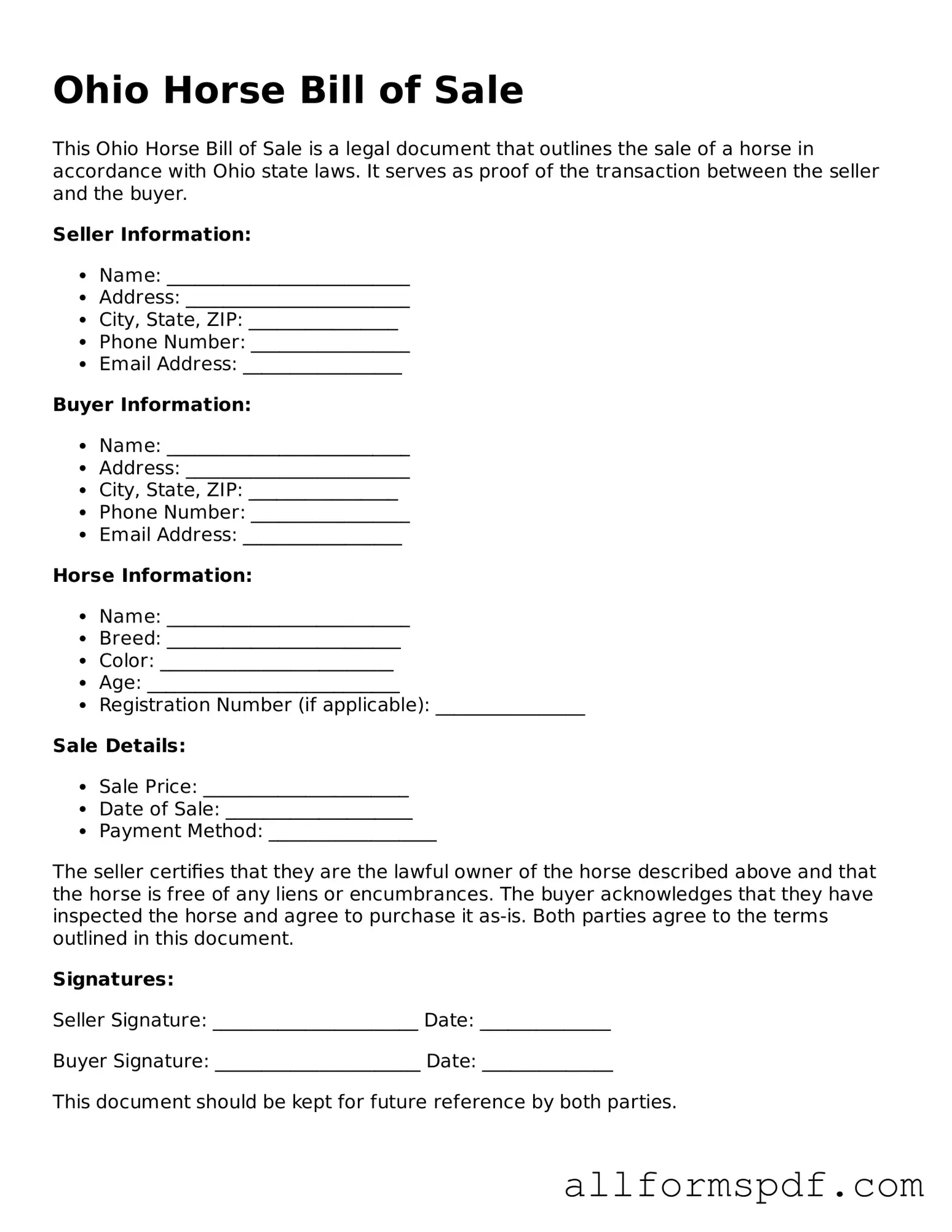When it comes to buying or selling a horse in Ohio, completing the Horse Bill of Sale form accurately is crucial. Unfortunately, many individuals make common mistakes that can lead to complications down the line. Awareness of these pitfalls can help ensure a smooth transaction.
One frequent error is failing to include all necessary information. The form requires specific details such as the horse's name, breed, age, and registration number. Omitting even one piece of information can create confusion and may raise questions about the horse's identity in the future.
Another mistake often made is not providing accurate seller and buyer information. It's essential to include full names, addresses, and contact information for both parties. Incomplete or incorrect information can hinder communication or lead to disputes over ownership.
Many people also overlook the importance of signatures. Both the seller and buyer must sign the form to validate the sale. Failing to obtain a signature from either party can render the document unenforceable, leaving both parties vulnerable to potential legal issues.
Additionally, individuals sometimes neglect to date the form. The date of the transaction is a critical element that establishes when ownership changes hands. Without a date, it can be challenging to resolve any disputes regarding the sale timeline.
Some sellers mistakenly assume that a verbal agreement is sufficient. However, not documenting the sale with a written bill of sale can lead to misunderstandings. A written agreement serves as a protective measure for both the buyer and seller, ensuring clarity regarding the terms of the sale.
Finally, individuals may fail to retain copies of the completed form. It is vital for both parties to keep a copy for their records. This documentation can be invaluable in case of future disputes or questions regarding the sale.
By being mindful of these common mistakes, individuals can navigate the Horse Bill of Sale process more effectively. Taking the time to fill out the form accurately not only protects both parties but also fosters trust and transparency in the transaction.
